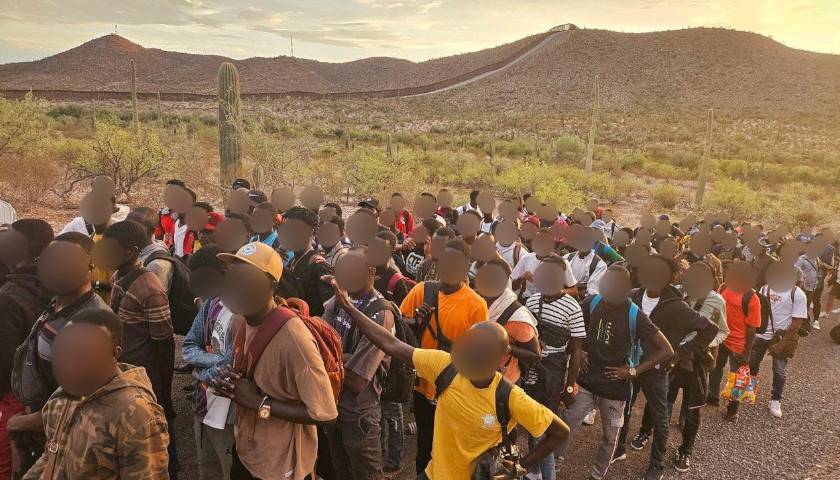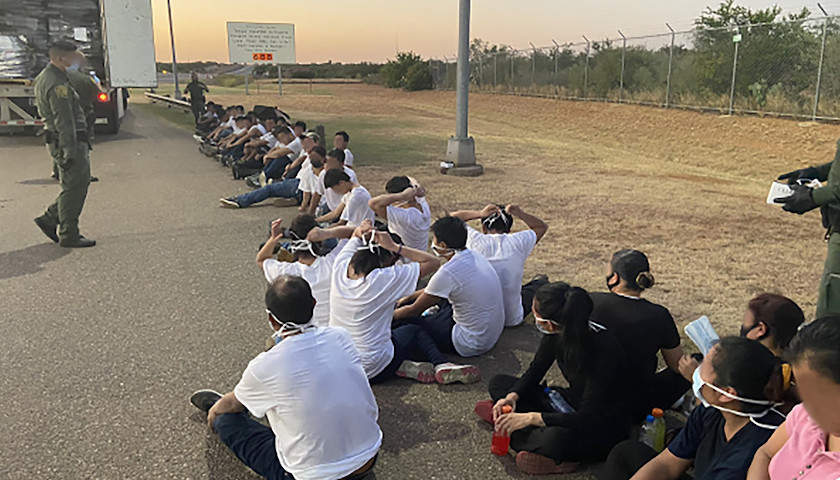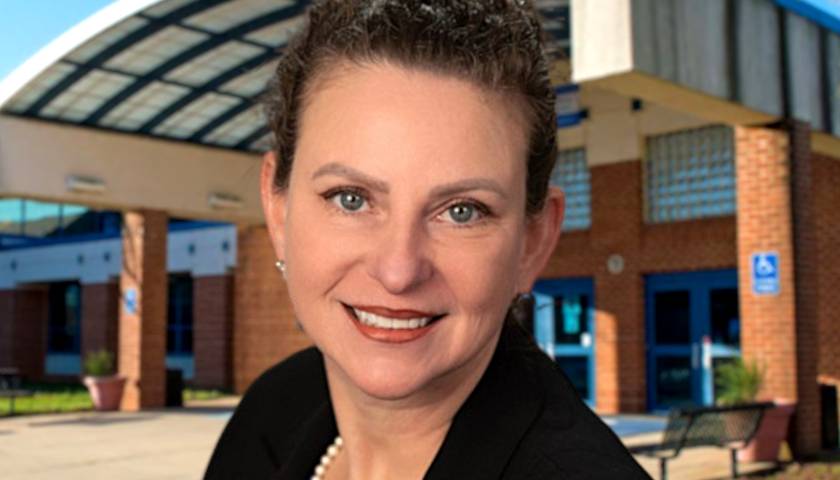by Martha Rosenberg
Rosenberg: Working as a reporter and now as a Fellow at the Center for Immigration Studies, you have done a lot of “shoe leather” reporting at the U.S. southern border — covering the Mexican drug wars and, in the last years, immigration. Unlike so many immigration reporters who rely on second hand reports, you have personally interviewed at least 1,000 immigrants. Why do you do this and how does what you learn differ from the prevailing narrative?
Bensman: I am a classically trained journalist, meaning I went through journalism school for both my undergraduate and graduate degrees and then worked as a newspaper reporter for 23 years before the Internet era changed old standard practices. I learned how to be a reporter during the decade (1993-2003) I worked as a gumshoe reporter for The Dallas Morning News during its power heyday of the 1990s. Old habits are hard to break.
One thing constantly drilled into me for years was that primary sources are the most valuable of all sources and to always first seek information from those, only going to secondary and third sources on any important issue if absolutely necessary … And the beauty of border reporting is that no one ever has to make do with second or third sources, even though that’s what most American reporters do nowadays. You can just go down and talk to the immigrants, who are everywhere south of the border and are fully available and willing to participate. Immigrant testimonies are so valuable because they can be easily tested against non-testimonial political narratives about them coming from non-immigrants who live very far away from the border and rarely visit. From the immigrants, I learned that prevailing narratives very rarely bear any resemblance to the distant prevailing narratives and presumptions about them, about their motivations for crossing and their personal circumstances.
Maybe the most important thing I learned from the immigrants is that almost all of them pulled the trigger on crossing journeys in quite direct response to immigration-related policies and court rulings that they realized were advantageous at that moment in time to spending fortunes of smuggled journeys and border crossings. And that almost no one is an actual victim of political persecution in need of asylum; nor are they desperate to leave home countries because of danger. They’re almost all economic migrants who will tell you instantly they only left to make more money and came now because American policy was allowing them to enter and stay, an incredible reward for their expense and trouble. Their direct testimonies almost always debunk distant narratives about all these other motives that come out of Washington or from the mouths of distant advocates, think tank researchers, political operatives, and reporters. None of whom will go near a real immigrant to get the truth. Lucky for me, as an old-fashioned writer, I guess! And maybe for anyone who reads me.
Rosenberg: In your book, Overrun: How Joe Biden Unleashed the Greatest Border Crisis in U.S. History, published this year, you describe how “Felix” allowed you to shadow him and see firsthand the smuggling and bribing operations. How did Felix and others you worked with over time deepen your understanding of the ongoing border crisis?
Bensman: Again, I’m always after primary sources to learn how things really are and really work. I met smugglers on a route section where Costa Rica meets Nicaragua, and U.S.-bound migrants were (and still are) arriving on commercial buses and taxis from Panama for the Nicaragua leg. Panama and Costa Rica pretty much shelter and then bus the migrants through their territories using a policy called “controlled flow,” because it is in the national interest of both countries that none linger for long and are moved on to the United States where they all want to go anyway. But Nicaragua doesn’t participate in the controlled flow scheme, so I went to the spot in far northern Costa Rica where the migrants have to resume their use of smugglers to get through Nicaragua and Honduras. In far northern Costa Rica towns like Los Chiles, where I met these smugglers, a system developed where local smugglers and immigrants would mingle at bus stations and cut their deals in the wide open. No one in law enforcement ever bothered to intervene; the whole system was officially blessed. It was easy to get to know the smugglers, who told me how the whole business worked. What I learned from them is that their business is all but sanctioned by the Costa Rica government because they perform the national interest service of preventing any buildup of unwanted immigrant camps or populations that require expensive resources like food and shelter. I learned all about how smuggling works in places far from the Mexican border, where vicious Mexican cartels control everything and charge thousands of dollars to cross. Smuggling farther south through those countries is a piecemeal, small-money, usually non-violent affair involving small businessmen and women and not connected to criminal organizations that operate like the Mexican cartels. I was able to visit an off-grid pirate smuggling town called La Trocha that straddled the Nico-Costa Rica border that was controlled by two competing but largely cooperative gangs. When they learned I was in town following one of the smugglers carrying a load of Haitians, they convened a kind of court to decide whether to let me leave with my story. I fled before they could decide. On a different day, a different smuggler let me follow his load of Haitians for delivery to corrupt Nicaraguan soldiers on the border, in opposition to fellow smugglers, I later learned. I saw the soldiers come out for the immigrants, and they took bribes to bring them into Nicaragua. On the way back to Los Chiles, though, smugglers in a big red 4×4 roared up along side of me and threatened to murder me and my translator and also the smuggler who’d brought us to see the transaction. To make a long story short, I fled that town immediately and didn’t stop until I was 50 miles away. The whole story is in the book.
Rosenberg: What interviews that you conducted with immigrants surprised you the most?
Bensman: One revelation really surprised me when I first noticed it but no longer does at all. It’s that all U.S.-bound immigrants pay very, very close, almost academic attention, to any and all policy pronouncements uttered or implemented by American leaders about immigration. They also pay close attention to news of all immigration-related court rulings. The reason they are so disciplined is because this or that policy or court ruling either makes illegal entry easier or harder. A lot of the discussion and learning is happening on cell phones that every adult immigrant carries, in online chat rooms, in hotel rooms, at shelters…. Next, everyone along the trails or in home villages turns their gaze to the actual border to see whether the policy actually let immigrants in over the border to stay. If the Americans are letting them in under whatever the new policy was, they’re a go for their own journeys. Conversely, if the new policy will prevent easy entry and stay, they’ll shelter in place.
I first discovered how smart and alert most immigrants were about what American leaders said out loud when I was visiting Tapachula, Mexico in early 2020, long before the U.S. elections pitted Joe Biden against Donald Trump. Trump all but closed the border, but a major rush was on from Guatemala. Why?
Because, the immigrants told me all week long, they’d watched on television how every presidential candidate in the Democratic primaries would one-up each other about who would open the border the widest when they beat Trump. Just these internationally televised Democratic debates alone spawned a massive rush toward the border. The immigrants were telling me they were coming now for the day just a relative few months hence when any one of those 15 Democratic contestants on stage beat Trump, took office, and opened the gates as they were promising. That was a major surprise, but I was later able to pen a prediction column based on these interviews that predicted an historic mass migration crisis if Biden did beat Trump. Which, as we all know now, happened just as I laid out and for the reasons the immigrants gave me at the time down in Tapachula.
I felt surprise by other revelations from my interviews with immigrants. Especially so when immigrants explained that they knew they were going to commit asylum fraud on the American system when they got to the border because the Americans would let them in for doing so — and all their friends and relatives had already committed fraud ahead of them and gotten away with it. I think they would tell me this because immigrants still en route haven’t been coached by American lawyers, migrant advocates, or relatives about what never to say out loud. So they’ll openly admit they planned to make up fake asylum stories even though they didn’t need asylum from anything, and were pretty happy where they were living already. A great many told me they were perfectly content and felt safe in home or adopted countries but decided to ditch those good lives for the prospect of great ones inside the United States. Wanting the world-famous indulgent American lifestyle is not grounds for asylum, which is for the politically persecuted by governments.
So it was always surprising when the immigrants admitted they were in no danger at all when they left homes and displayed detailed understanding that they would have to fabricate stories of danger later to get inside the United States.
Their stories usually change to “danger and persecution” only after they entered and people warned them about what to say and what not to say. I still laugh out loud when I see major newspapers quote these immigrants’ stories of woe as though the stories were absolutely true, undisputed facts, without skepticism, warning to readers, or actual evidence.
Rosenberg: You write in Overrun that migrants from as many as 160 different countries are entering our very porous southern border. How do migrants from different countries differ in their motives for crossing the border — if they do?
Bensman: The motives I hear are almost universal, in that a rare opportunity had suddenly opened up to enter the United States by illegally crossing the southern border and that they can earn more money than they could back home. That makes them all economic migrants, not legitimate asylum seekers. The other common factor that struck me as evidence of asylum ineligibility is the fact that they have crossed the borders of a dozen safe countries that would have taken them in from any real danger. Ukrainians are a great example of this. All 27 nations of the European Union offered Ukrainians three-year asylum residencies, complete with housing subsidies, free medical care, food, clothing, and schooling. All renewable. Yet tens of thousands of Ukrainians showed up at the U.S. southern border saying they needed asylum from Russian bombs dropping on their homes as though they had no possible other place to go. If you’re bypassing generous asylum offers from 27 of the richest countries on Earth to claim asylum as the American southern border, you’re a fraudster, not an asylum seeker. By the way, the fraud worked perfectly; the Biden administration let in at least 100,000. And so it goes like that because the American lifestyle is, as the 80’s rock song goes, simply irresistible. I’ve met them from Dagestan, Kyrgyzstan, every country of Africa, China, and the Middle East. We all get why someone from Dagestan would rather live in the United States if the opportunity opened to them. Nothing compares to the United States, even European countries. But they admit to me that they’re only coming now because the border opened up and made entry easy and permanent so … why not?
Rosenberg: What are your memorable interviews with Haitian and Venezuelan immigrants both of whom you say were not fleeing their original countries?
Bensman: What’s most memorable about my interviews with these immigrants is how they exposed the vast gulf between American liberal political narratives about them and actual reality. I’ve never met a Haitian who’s lived in Haiti for four, five, six, eight years. Yet the Washington narrative was that they were fleeing directly from Haiti, and who among us would want to live in such a dangerous failed state and deny Haitians U.S. asylum? Except that every Haitian I’ve interviewed — and that’s many hundreds — told me they’d been living peacefully, prosperously, and with residency and asylum in comparatively wealthy countries like Chile and Brazil. Living domiciled in a safe third country is an automatic disqualifier for the U.S. asylum they’re claiming. All Haitians know this. So they dump their Brazilian passports, Chilean identity cards, and other identifications on the Mexican side just before crossing in. I’ve filled bags full of these discarded cards I found along the Mexican bank of the Rio Grande. Why discard them? Because these cards are evidence that they are lying about coming directly from Haiti. They loved their lives in Chile, for instance. One Haitian said it all when I asked why he would want to shed his beloved lifestyle in Chile of beaches, nightclubs, and steady work. Life in Chile was a thousand times better than life in Haiti, he explained. But life in America would be a million times better, and the border had just opened up, so why not simply walk through it?
It’s the same story with Venezuelans. They’re all telling the Americans they’re coming straight from that messed up, destroyed kleptocracy, and their champions inside the beltway are decrying how any humane nation would never send them back to hell. But that’s all just as much a lie as it was about the Haitians. Every Venezuelan I’ve ever met has been living prosperously and safely in neighboring countries like Ecuador, Colombia, Peru, Brazil, and beautiful Caribbean island nations. They say they came because Biden opened the door to them. The result? All Venezuelans get to stay under humanitarian protection from their wonderful lives in these third countries. We’re just idiots.
Rosenberg: You have mentioned that there is no longer a distinction between legal immigration — which populated this country so long ago — and today’s free-for-all. Can you please elaborate?
Bensman: American and European liberals increasingly conflate illegal immigration with legal immigration and call it all “immigration.” They do this purposefully to create a kind of political protection space and tolerance for illegal immigration, which is broadly unpopular. This is an artful political device, clever really, meant for broad sort of unquestioning consumption among lower-information voters. The open-borders liberals behind this purposeful misdirection would have “illegal” immigrants ride the coattails of those who went through all the legal hoops, waited their turn for years, paid all the fees and lawyers, and then finally won their reward through honesty and persistence. But coat-tailing the illegals in with the legals — usually with an argument that “immigration” is a net good for all countries — obfuscates that there are major problems with the illegal immigrants. Which is that they broke laws as uninvited strangers, undermined national sovereignty rights that all nations have exercised to decide who gets in, breached guarded parameters put up for common-good reasons, posed security threats because they are unknowable strangers, and cause expensive social burdens. Those who speak and write about immigration should never allow this ruse to succeed. Illegal immigration is broadly unwanted by citizens of host nations for damned good reasons. Plus, tolerance of illegal immigration substantially undermines the legal system by allowing uninvited foreign nationals to cut the line and gain the same rare privileges as those who did it the legal way.




